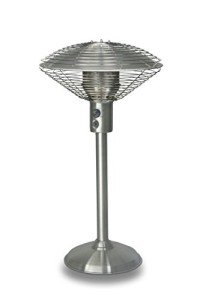10 Misconceptions Your Boss Holds About Buy Gas Radiant Heaters

Buying Gas Radiant Heaters: A Comprehensive Guide
Gas radiant heaters have actually gotten popularity in the last few years for their performance and ability to offer instant warmth. As more house owners and organizations look for ways to keep their areas comfortable, understanding the functions, advantages, and considerations when purchasing these heating systems can be very helpful. This article dives into the complexities of gas radiant heaters, assisting possible buyers in making notified decisions.
What are Gas Radiant Heaters?
Gas radiant heaters are devices that use propane or gas to produce heat directly into a room. Instead of heating the air, they warm things and individuals in their vicinity, supplying convenience more quickly and efficiently. These heaters are popular for both indoor and outdoor settings due to their adaptability and efficiency.
Key Features of Gas Radiant Heaters
- Direct Heating: Unlike traditional heaters that warm the air, gas radiant heaters provide direct heat, making them an efficient choice for quickly warming up areas.
- Mobility: Many designs are available as portable units, permitting them to be easily moved from one place to another.
- Fuel Variety: Gas radiant heaters can be powered by gas or propane, offering users versatility based on schedule and preference.
- Adjustable Settings: Most gas radiant heaters included adjustable heat settings, enabling users to customize the level of heat based upon their requirements.
Advantages of Gas Radiant Heaters
- Energy Efficiency: These heaters transform gas into heat effectively, resulting in lower utility bills compared to electrical heaters.
- Quick Heating: Radiant heat is felt almost immediately, making these heaters suitable for abrupt temperature level drops.
- Low Maintenance: Gas radiant heaters normally need less maintenance than electrical models, making them a hassle-free choice.
- Eco-friendly: When powered by tidy natural gas, these heaters can be a more ecologically sustainable choice compared to other heating approaches.
Kinds Of Gas Radiant Heaters
When it concerns choosing a gas radiant heater, it's vital to understand the different types available. Below are the most typical options:
- Indoor Gas Radiant Heaters: Designed for indoor spaces, these heaters are usually vented or unvented and typically featured built-in security functions.
- Outdoor Gas Radiant Heaters: Commonly used in outdoor patios or outdoor dining locations, these heaters are created to withstand the aspects.
- Wall-Mounted Gas Radiant Heaters: A space-saving choice, these systems are ideal for smaller spaces and can be equipped with different heat outputs depending on the location's needs.
- Freestanding Gas Radiant Heaters: These portable designs can be used in numerous areas, best for those who require versatility.
Buying Guide: How to Choose the Right Gas Radiant Heater
When purchasing a gas radiant heater, a number of elements must be thought about to guarantee you choose the ideal model for your space:
1. Heating Capacity
- Determined in BTUs (British Thermal Units), the heater's capacity determines just how much location it can effectively warm. Purchasers need to evaluate their specific needs based upon space size.
| Room Size (sq feet) | Recommended BTUs (for Gas Radiant Heaters) |
|---|---|
| 100 - 200 | 5,000 - 10,000 BTUs |
| 200 - 400 | 10,000 - 20,000 BTUs |
| 400 - 600 | 20,000 - 30,000 BTUs |
| 600 - 800 | 30,000+ BTUs |
2. Type of Gas
- Think about whether you will be utilizing propane or natural gas, as different heaters deal with different fuel types.
3. Safety Features
- Try to find models geared up with security functions such as automated shut-off valves, tip-over protection, and oxygen deficiency sensing units.
4. Installation Requirements
- Some heaters might need expert setup, especially vented designs. Make certain to consider the costs and requirements associated with setup.
5. Portability
- If flexibility is essential, consider portable designs that can be easily moved from one area to another.
Setup and Maintenance
Gas radiant heaters are generally straightforward to set up, particularly portable models. Nevertheless, vented options may necessitate professional setup to guarantee they fulfill regional security codes.
Upkeep generally includes:
- Regular cleaning to avoid dust buildup.
- Inspecting gas connections and fittings for leakages.
- Making sure security features are functional.
Suggestion: Regular checks around the system can assist extend its lifespan and maintain security.
Frequently Asked Questions (FAQs)
Q1: Are gas radiant heaters safe for indoor use?A1: Yes
, as long as they are properly vented and equipped with needed security functions, they can be safely used inside.
Q2: Can gas radiant heaters be used in enclosed spaces?A2: Unvented gas heaters can present threats in enclosed spaces due to potential suffocation or carbon monoxide gas accumulation. Always ensure enough ventilation. Q3: How do I know what size heater I need?A3: The appropriate size depends on the location you intend to heat. Refer to the BTU chart
above to identify your needs. Q4: What is the distinction between propane and natural gas heaters?A4: The primary difference lies in their energy source
; propane is provided through tanks, while gas is generally piped into homes. Q5: How can I make the most of efficiency?A5: Ensure the heater is appropriately sized for your space, keep it frequently, and think about using it in combination
with other heating techniques for optimum comfort. like this can be a terrific addition to any home or company, offering energy-efficient and quick heating solutions. By understanding the different types, features, and considerations
when purchasing, purchasers can make informed choices that meet their heating requires. With the best choice, these heaters provide convenience, dependability, and an inviting environment during chillier seasons.

